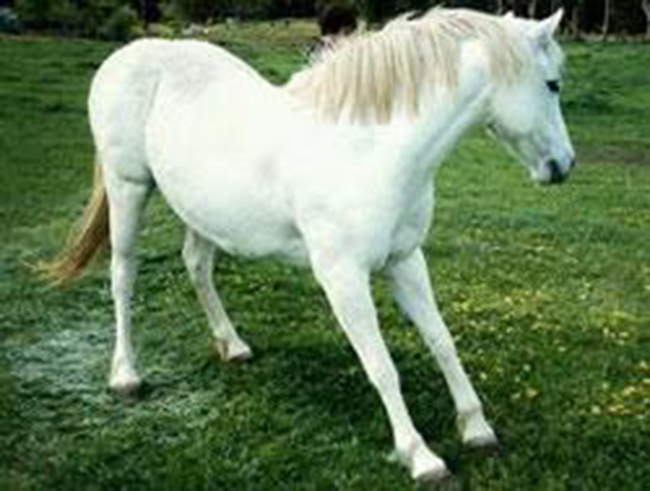HELPFUL ARTICLES
WHAT IS LAMINITIS?
Dr. Catarina Ruksznis, DVM

Laminitis is a condition that can cause serious lameness in horses, ponies and donkeys. In order to understand the condition, a little background into the anatomy of the hoof is required. The hoof capsule surrounds and supports the third phalanx (P3), which is better known as the coffin bone. The coffin bone is attached to the hoof capsule through a huge number of interconnected tendrils of tissue called laminae. When a horse develops laminitis there is inflammation within the laminae and this connection begins to break down, allowing movement of the coffin bone within the hoof. This destabilization is very painful and can cause permanent changes in the position of the coffin bone within the hoof.
What causes laminitis?
Generally, alteration of blood flow to the hoof is thought to cause injury to the laminae and result in laminitis. Laminitis is often associated with endocrine diseases, such as Cushing’s Disease or Equine Metabolic Syndrome. Horses with these diseases are prone to repeat episodes and require careful management to prevent flare ups. Horses that are severely ill (septic) and/or have high fevers are also at risk. Potomac Horse Fever is particularly notorious for causing laminitis. Support limb laminitis occurs when a horse becomes non-weight bearing on one limb. The corresponding, sound limb must then support the weight of the horse alone, placing a greater strain on the laminae. “Road Founder” can occur when a horse is worked on a hard surface – the concussion of the hoof against the ground leading to lameness. Finally, horses that are suddenly turned out on lush pasture or overeat after breaking into the grain room are at risk for developing laminitis.

How is it diagnosed?
Laminitic horses have a characteristic gait and stance which makes them easier to spot. Horses will rock backwards to take the weight off of their front feet and move carefully, with short strides. They may be reluctant to move at all and will be more painful when turning. Digital pulses will be increased and they show sensitivity to hoof testers over the toes. Radiographs (x-rays) in more chronic cases will show movement of the coffin bone – either rotation of the tip downwards or sinking of the bone within the hoof capsule. If there is movement of the coffin bone, the horse has “foundered”.
What are the treatment options?
Horses should be immediately confined to a small stall or paddock with deep, soft footing to prevent excessive strain on the laminae. One of the best treatments for acute laminitis is cryotherapy, icing the feet and lower limbs. If appropriate icing is applied within the first few days of a laminitic episode, it has been shown to prevent founder. For horses with more chronic laminitis, pain control and managing blood flow with medications is key. Careful trimming and shoeing changes based on radiographic recommendations may be necessary to make the horse comfortable. Many do well with boots, such as Soft Rides, which provide support and extra cushion for the feet.
Can horses with laminitis recover?
Although laminitis is a very painful condition, horses that respond well to therapy and do not show major changes in coffin bone position may return to full work. That being said, some horses do experience chronic pain that prevents them from working or may even prevent them from having a good quality of life. Research is ongoing to discover new ways to help these horses with new medical and surgical solutions.




